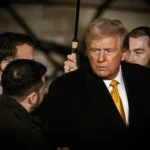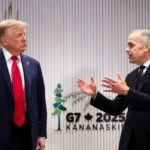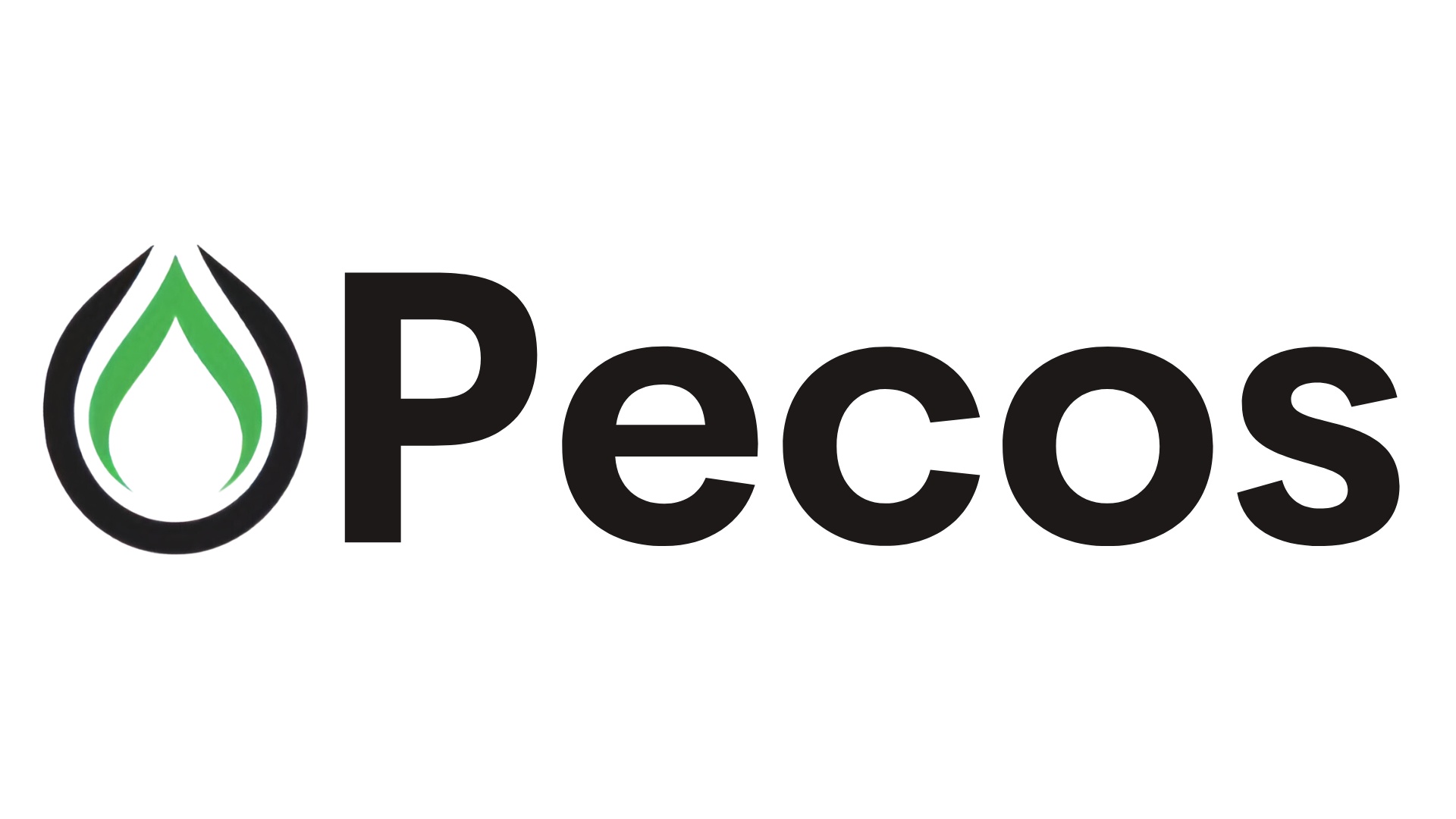Energy News Beat
ENB Pub Note: This article from the Foreign Policy Research Institute raises several interesting and key points. However, it does not consider President Trump’s commitment to changing the global elite’s path to a one-world government. By being the first “Post Literate,” he has figured out how to communicate directly to voters and his constituents, he can avoid being trapped by the deep state and one-world government elite. The EU, NATO, and the UN are about to determine how much has changed during the Biden Administration’s control. It is not unreasonable to expect President Trump to articulate defunding vast chunks of the UN, and NATO has already pulled out of many globalist organizations. The more corruption, greed, and graft that is discovered by DOGE, you will see an equal and opposite reaction to get away from the corrupt organizations.
My series with George McMillan covers many of the geopolitical issues surrounding the global land/sea power moves governments make regarding energy and pipelines. You can find hours of material here: https://energynewsbeat.co/george-mcmillian/.

In a prophetic speech delivered in Brussels in June 2011, then-U.S. Defense Secretary Robert M. Gates warned Washington’s European allies that if they did not start paying substantially more for their own security, NATO might one day be a thing of the past. Gates noted that he was only “the latest in a string of U.S. defense secretaries who have urged allies privately and publicly, often with exasperation, to meet agreed-upon NATO benchmarks for defense spending.”
At the time, only five of the 28 members of NATO—Albania, Britain, France, Greece, and the United States—were spending at least 2 percent of their GDP on defense annually, as they had pledged to do in 2006. Unless that situation changed dramatically, Gates said, there would be a “dwindling appetite” to defend Europe among the “American body politic writ large.”
In a prophetic speech delivered in Brussels in June 2011, then-U.S. Defense Secretary Robert M. Gates warned Washington’s European allies that if they did not start paying substantially more for their own security, NATO might one day be a thing of the past. Gates noted that he was only “the latest in a string of U.S. defense secretaries who have urged allies privately and publicly, often with exasperation, to meet agreed-upon NATO benchmarks for defense spending.”
At the time, only five of the 28 members of NATO—Albania, Britain, France, Greece, and the United States—were spending at least 2 percent of their GDP on defense annually, as they had pledged to do in 2006. Unless that situation changed dramatically, Gates said, there would be a “dwindling appetite” to defend Europe among the “American body politic writ large.”
Change has come in Europe, but perhaps not fast enough. Today, two-thirds of NATO members meet the 2 percent benchmark. But in light of Russia’s war in Ukraine and U.S. President Donald Trump’s demand that allies ramp up spending to 5 percent, Europe still has a long way to go. Trump has long been derisive of NATO. Last year, he said that he would encourage Russians to “do whatever the hell they want” to any NATO country that doesn’t pay more for its defense. Meanwhile, Vice President J.D. Vance has said that the United States could drop support for NATO if the European Union tries to regulate Elon Musk’s business platforms.
The disagreement over budget allocations points to a more profound issue: Too many Americans, as evinced in the populist rhetoric of Trump and Vance, just do not care deeply about defending Europe anymore.
 A man and woman are seen at center as a military parade with soldiers in uniform playing instruments pass by on a cobblestoned street.
A man and woman are seen at center as a military parade with soldiers in uniform playing instruments pass by on a cobblestoned street.
U.S. Secretary of Defense Pete Hegseth and his wife, Jennifer Rauchet, watch a military ceremony in Warsaw on Feb. 14. Omar Marques/Getty Images
The shift in U.S. attitudes toward Europe should not be surprising. NATO has lasted for nearly 80 years. That is a long time in modern history, especially in an era of rapid technological change that has affected information, economics, air travel, migration patterns, and identity itself.
When NATO was founded shortly after World War II, the United States dominated the world with more than half of all global manufacturing capacity. That figure has dwindled to around 16 percent. In the postwar period, it was natural for the United States to both lead and finance the new alliance; after all, European cities were smoking hulks from aerial bombardment, and Joseph Stalin’s Soviet Union loomed as a mortal threat to Western Europe. Over the decades, that dynamic evolved. Europe, with its security largely paid for by the United States, built enviable social welfare states where citizens enjoyed the good life. Stalin died, the West achieved detente with the Soviets, and the Soviet Union later collapsed.
NATO survived the decades after the Cold War and the rebirth of Russian imperialism—a period that has included the rise of roiling populism and identity politics in the West—largely because the alliance was led by people who either had a keen memory of World War II and the early Cold War years or grew up with and admired people who did. But that living historical memory is evaporating. In the process, Americans have rediscovered an older, more archaic aspect of their own identity—one that Europeans neglected for too long. Europe has always known that the United States is a continent facing the Pacific as well as the Atlantic, but it has never sufficiently internalized that knowledge to affect its own behavior.
U.S. identity, at least since the early 20th century, has been shaped by two broad phenomena: one geographical and the other Wilsonian. The geographical one seems obvious, but for too many people—especially European elites—it really isn’t.
The temperate zone of North America, which largely comprises the United States, is perfectly apportioned for nationhood, with deep-water ports along the East Coast and routes through the Appalachians to the vast rich soils of the prairie. The water-starved Great American Desert, now known as the Great Plains, arose as a true natural barrier, but a transcontinental railroad was built to carry a population through the Rocky Mountains to the Pacific Ocean. Geography wrought a cohesive nation separated from the outer world by two oceans, and there was so much going on inside it—with all of its problems and possibilities—that the rest of the world could remain obscure.
Yet once the Pacific was reached, there was not one but two coastlines to consider, not to mention the Gulf Coast between Florida and Texas. This opened up great sea lines of communication to both Europe and Asia and enabled a robust trade with the outer world.
 Woodrow Wilson sits in a chair holding a letter. Behind him is a desk stacked with books.
Woodrow Wilson sits in a chair holding a letter. Behind him is a desk stacked with books.
An undated portrait of U.S. President Woodrow Wilson. Hulton Archive/Getty Images
Here is where the other aspect of U.S. identity comes in: Wilsonianism—shorthand for the ideology of seeing the achievement of freedom far beyond U.S. shores as essential to the country’s own security. Although Woodrow Wilson, the 28th U.S. president, failed to bring the United States into an international order following World War I, he created a goal for the country to strive for—just as steamships and aircraft were beginning to bring it into much closer proximity with Europe. It would take World War II and its aftermath, making Washington the world’s preeminent power, to achieve the Wilsonian ideal of establishing a bastion of freedom and democracy in a large part of the European continent.
As obvious and desirable as this all seemed in the postwar years, it was not altogether natural in geographical terms. It required a knowledge of the sacrifices that the United States had made for the sake of a better world, combined with historical kinship based on Washington’s European roots—philosophical roots more than blood and soil ones. This all required reading, something that elites take for granted but shouldn’t. For as eight decades have passed, this tradition can only now be valued through books and education, since the lived memory of the establishment of the Atlantic alliance is gone, just as the Cold War is fading from consciousnesses.
Trump is not an heir to this tradition. He doesn’t really read. He is post-literate—that is, he exists in a world of social media and smartphones but has not immersed himself in the study of narrative history, even superficially.
Thus, he is unappreciative of the postwar saga of the West. NATO is a mere acronym to him, not a connotation of humankind’s largest-ever military alliance, which emerged out of the struggle against Nazi fascism. He likely knows nothing about the Atlantic Charter—signed by U.S. President Franklin D. Roosevelt and British Prime Minister Winston Churchill off the coast of Newfoundland, Canada, in August 1941—that laid out an inspiring vision for a postwar world, or about the building of a postwar order by great U.S. diplomats and statesmen, such as Averell Harriman and George Kennan.
The U.S. foreign-policy elite has cut its teeth on such inspirational history. Trump and his followers are likely unfamiliar with much of this. And because of the evolution of technology, he may not be the last president of his kind.
Since Trump is ahistorical, he has only geography to fall back upon. He imagines the United States as a continent existing on its own, and he registers the comparative closeness of such places as Greenland and Panama, which he has vowed to acquire. In Trump’s mind, Greenland and the Panama Canal are organic extensions of the logic of U.S. geography, especially in an age that will likely see more naval activity in the Arctic.
Another factor to consider is that technology has been shrinking geography itself. This is an easy change to miss, since it has been so gradual. Crises in one part of the world can affect crises in other parts as never before. The well-read, historical mind sees this development as a reason for the United States to bolster alliances the world over. But in Trump’s more primitive and deterministic worldview, it is a time to bolster regional spheres of influence in a more claustrophobic world that will be in perpetual conflict.
What Trump seems to have in mind is a greater North America, from the Panama Canal to Greenland, with Canada subservient to the United States. Manifest destiny, according to Trump’s mythology, now begins to complete itself: What once meant conquering the temperate zone of North America from east to west now entails a conquest from north to south. Trump’s attempt to rename the Gulf of Mexico as the “Gulf of America” says it all.

Hal Brands
As for Europe, it is becoming weaker and more divided, threatened by Russia to the east and political turmoil in response to migration from the Middle East and Africa to the south. As I wrote in my 2018 book, The Return of Marco Polo’s World, “[a]s Europe disappears, Eurasia coheres.” Europe, I explained, would eventually merge with a Eurasian power system. The war in Ukraine, which has brought Russia into deeper alliances with China, Iran, and North Korea, has borne this theory out. In today’s smaller world, Europe cannot separate itself from the upheavals of Afro-Eurasia, making it less valuable in Trump’s new map. This is what happens when Wilsonianism dies.
For many years, Europeans have worried about the United States paying too much attention to China and the rest of East Asia. The problem is deeper than that. Trump seems to see China as its own continent and power bloc, much like the United States. The U.S. president might have a trade war with China, or he might not. He might even try to improve relations with Beijing. The point is that China registers in Trump’s view of an Earth divided according to regions—whereas Europe, despite NATO and the European Union, is insufficiently united to amount to much of anything.
Trump also hates elites and their projects, and NATO is the ultimate elite project. Had the alliance’s members taken Gates’s reprimand to heart in 2011 and raised their defense budgets much sooner, Trump might feel differently now. And even if he didn’t, then at least he would not have the weapon of relatively small European defense budgets to use against NATO allies, which would seriously weaken his argument.
Meanwhile, the United States’ first post-literate president signals a challenge that Europe has not faced since Washington came to its rescue in 1941. The Cold War and its aftermath, when the former captive nations of Central and Eastern Europe joined NATO, may loom in the future as a halcyon time.
The post Trump’s New Map appeared first on Energy News Beat.









